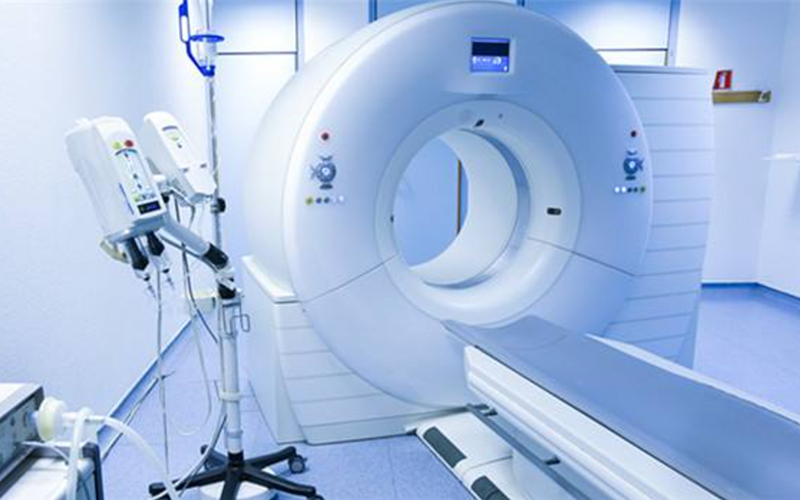The security monitoring power supply mode mainly includes three power supply modes: independent power supply mode, centralized power supply mode, and POE power supply mode.
One, independent power supply mode
The benefits of independent power supply
Independent power supply refers to the installation of an independent security monitoring power supply at the front of each camera. This security monitoring power supply only provides power for one camera.
1. Simple maintenance and easy replacement of power supply
Because each camera has an independent security monitoring power supply, when a camera malfunctions, you can quickly troubleshoot the malfunctioning camera. If the fault caused by the security monitoring power supply is detected, only the single faulty power supply needs to be repaired and replaced.
2, to avoid paralysis of the monitoring system
Once there is a problem with the power supply system in the centralized power supply mode, and the UPS is not used, the entire monitoring system will not work normally and will fall into a paralyzed state. In the independent power supply mode, single or several cameras cannot work due to the failure of the security monitoring power supply, avoiding the paralysis of the monitoring system.
Insufficient independent power supply
1. The cost is too high
The total cost of multiple independent security monitoring power supplies is generally higher than that of a centralized power supply with the same power output. This cost does not include the cable cost.
2, the probability of encountering external damage is higher
Because the independent security monitoring power supply is often close to the camera, if it is outdoors, it is more likely to be affected by external forces such as sun, rain, and lightning. Therefore, choose an outdoor dedicated independent security monitoring power supply, especially pay attention to the protection performance of the independent security monitoring power supply.
2. Centralized power supply mode
centralized power supply
Connect a 12V centralized power supply to the 220V power supply, and then use 2*1.0 red and black power cords to connect to the camera respectively. The 12V power supply distance should not exceed 100 meters. After connecting a single power cord connector, connect the single power cord connector to the power connector of the surveillance camera. The centralized power supply mode refers to the use of 12V switching power supply to centrally supply power to the front-end load in the monitoring room or at an intermediate point. Compared with the independent power supply mode, the biggest difference is that one power supply can provide power for multiple cameras.
The role of centralized power supply
The management objects of the data center mainly include two parts: infrastructure and IT infrastructure, such as power distribution, network equipment, security, etc.
The purpose of centralized monitoring is to be able to monitor the operation of infrastructure and IT infrastructure through the application of management and technology to realize real-time discovery and notification of faults and exceptions; in addition, it can also collect and organize monitoring data to provide capacity Management, incident management, problem management, and compliance management provide the basis for analysis and ultimately achieve the goal of high availability in the data center.
The advantages of centralized power supply
1. Lower cost
Although the centralized power supply mode is adopted, the cables used are often more than those used in the independent power supply mode, but thanks to the high cost performance of the centralized power supply, the cost of the power supply system using the centralized power supply mode is often the most cost-effective power supply system .
2, centralized maintenance is simple
Adopting centralized power supply mode, convenient line laying, convenient construction and easy management.
3, the overall energy consumption is low
According to actual engineering cases, the total energy consumption of the centralized power supply system is lower than the total energy consumption of the independent power supply system.
Disadvantages of centralized power supply
1, the early configuration is complicated
Surveillance cameras need a large start-up power at the moment of startup, and long-distance power transmission will cause loss, so the power of centralized power supply is not the sum of the power of all surveillance cameras. Adopting the centralized power supply mode requires engineers to have a detailed understanding of the entire monitoring system in order to make a reasonable plan.
(Actually, since the camera has a large startup current at the moment of startup, coupled with the loss of long-distance transmission in engineering, the power required by the surveillance camera is not simply the sum of the rated power of all cameras. The correct approach is Add the rated power of the cameras of the entire surveillance system and multiply it by 1.3 times. This is the actual power required by the camera, and then add about 30% of the loss; finally add a 30% margin for future expansion. )
2, there is a possibility that the monitoring system may be paralyzed
If there is a problem with the power supply system in the centralized power supply mode without UPS power supply, it will cause the entire monitoring system to fail to work normally and fall into a paralyzed state.
Three, POE power supply
POE power supply mainly has the following four methods:
1. Both switches and terminals support POE
This method is that the PoE switch is directly connected to the wireless AP and network camera that support PoE power supply through the network cable. This method is the simplest, but you also need to pay attention to the following two points:
①Determine whether the PoE switch and wireless AP or network camera are standard PoE devices
②Carefully confirm the specifications of the purchased network cable. The quality of the network cable is very important. A poor quality network cable will cause the AP or IPC to be unable to receive power or restart continuously.
2, the switch supports POE, the terminal does not support POE
This solution PoE switch comes out to connect to a PoE splitter. The PoE splitter separates the power supply into data signals and power. There are two output lines, one is the power output line, and the other is the network data signal output line, which is a common network cable. The power output has 5V/9/12V, etc., which can match various DC input non-PoE power receiving terminals, and supports the IEEE 802.3af/802.3at standard. The data signal output line, that is, the ordinary network cable, can be directly connected to the network port of the non-PoE power receiving terminal.
3. The switch does not support POE, and the terminal supports POE
This solution switch comes out to connect to a PoE power supply, and the PoE power supply adds power to the network cable and transmits it to the terminal. This kind of scheme is conducive to expand the original wiring network, has no influence on the original network.
4, switches and terminals do not support POE
This kind of solution switch comes out to connect to the PoE power supply, then connect to the PoE splitter, and finally transmit to the terminal. Scheme 3 and Scheme 4 are suitable for the transformation of traditional networks, that is, occasions where the original switch does not support PoE power supply, but you want to take advantage of PoE power supply.
Poe power supply connection method
In actual application, how should the network cable be connected? Many friends have some understanding of the POE power supply technology and know the power supply line sequence problems such as 1 2 3 6 or 4 5 7 8, so they are afraid that if they are connected incorrectly, the equipment will burn down and other serious consequences. .
The POE power supply standard requires POE switches, POE power supply modules (POE power supplies) and other PSE equipment to support one of the 1 2 3 6 and 4 5 7 8 power supply line sequences. Of course, the latest 802.3at 4pair standard requires Both are supported at the same time. The requirement for POE powered equipment is that it must support two power supply modes at the same time.
4. How to choose independent power supply and centralized power supply
How to choose independent power supply and centralized power supply
The advantages and disadvantages of independent power supply and centralized power supply are roughly as above. The specific choice depends on the actual installation environment and customer requirements. Generally speaking, it is appropriate to use independent power supply for monitoring systems below 4 channels. For the monitoring system of 4 to 16 channels, if the distance is equivalent, it is recommended to choose the centralized power supply mode. The monitoring of more than 16 channels can be combined with multi-channel centralized power supply, provided that the pre-configuration must be done.
for example:
If a business building has 100 fixed gun-type network cameras, and the rated power of each camera is 4W, how do we configure the camera power supply? According to the above calculation method, we calculated that the rated power of the camera is 4W*100=400W, and the actual power used by the camera is 400W*1.3=520W. After considering the loss, the power required by the camera is 520W*1.3=676W plus the power margin, the final power required by the camera is 676W*1.3=878W
Summarized as follows:
The power supply that the camera needs to configure = the rated power of the camera*1.3*1.3*1.3 (Note: If the monitoring distance is particularly long, you need to increase the power supply and increase the power supply voltage).
What is the most taboo for the configuration of the power supply of the network camera?
The most taboo thing is: the entire monitoring system shares a power supply.
The reasons are as follows:
1) When the system is repaired, it is often necessary to turn on and off the power. All cameras start at the same time when the power is turned on. The starting current is extremely large, which has a great impact on the power supply, and will burn the power supply in serious cases.
2) All cameras share a power source. When the power source fails, the entire closed-circuit monitoring system is paralyzed.
Especially the images of some important entrances and exits cannot be monitored, which may cause unnecessary trouble.
So what should be the correct way? As in the above example, a business building has 100 fixed cameras, a total of about 800W power supply is required. The correct configuration should be to choose 4 sets of 200W power supplies. In this way, when a certain power supply fails, cameras at important entrances and exits can be connected to other good power supplies without affecting the operation of the entire system.
Application Area
It can be widely used in surveying and mapping, unmanned driving, unmanned aerial vehicles, driving test and driving training, digital construction, precision agriculture, deformation monitoring and industrial control.
![Military Instrument Equipment Solutions]() Military Instrument Equipment SolutionsMilitary instruments and equipment are the backbone of national security, undertake national defense scientific research and production tasks, and provide the national armed forces with various weaponry
Military Instrument Equipment SolutionsMilitary instruments and equipment are the backbone of national security, undertake national defense scientific research and production tasks, and provide the national armed forces with various weaponry![Medical Instruments Equipment Solutions]() Medical Instruments Equipment SolutionsWhether a medical device can exert its maximum effectiveness in the hospital is not only directly related to the technical performance of the machine itself, but also has an extremely important relationship with the quality of the power supply
Medical Instruments Equipment SolutionsWhether a medical device can exert its maximum effectiveness in the hospital is not only directly related to the technical performance of the machine itself, but also has an extremely important relationship with the quality of the power supply![Artificial Intelligence Equipment Solutions]() Artificial Intelligence Equipment SolutionsArtificial intelligence and the State Grid must be very familiar to everyone. One is familiar and the other can be seen every day, but if you combine the two together, I believe many people will be relatively unfamiliar. Is artificial intelligence already able to be applied to the power grid
Artificial Intelligence Equipment SolutionsArtificial intelligence and the State Grid must be very familiar to everyone. One is familiar and the other can be seen every day, but if you combine the two together, I believe many people will be relatively unfamiliar. Is artificial intelligence already able to be applied to the power grid
 Chinese / 简体中文
Chinese / 简体中文
 English / 英文
English / 英文




